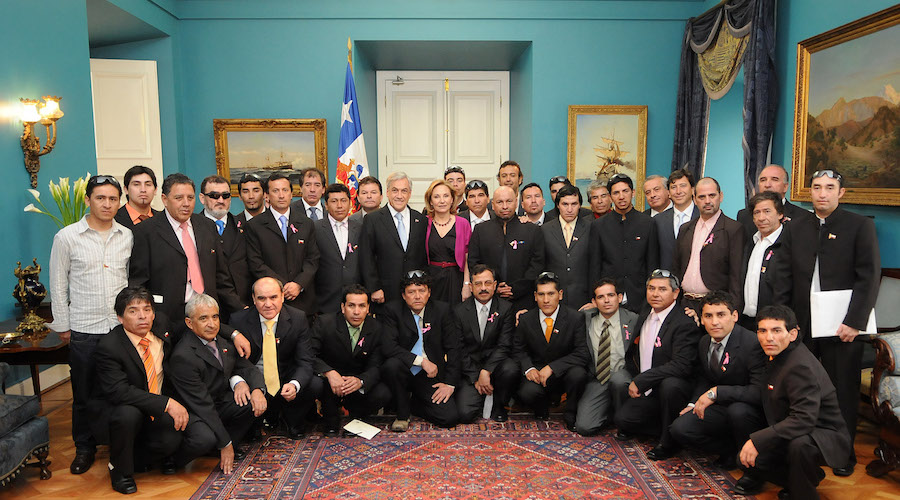
Chile’s Supreme Court awarded $1.4 million to 31 of the 33 miners that were trapped for two months in 2010, 700 metres below the surface in the San José mine located in the northern Atacama region.
The ruling of the top tribunal’s third courtroom notes that the Chilean State “incurred in a lack of service” as two of its agencies, the National Geology and Mining Service, Sernageomin, and the Labour Directorate, failed to comply with their legal obligation of conducting proper precautionary inspections.
According to the court, had such inspections been conducted, activities at the San José mine would not have been authorized.
On August 5, 2010, the San José gold and copper mine, a small deposit nestled among dusty, desert hills near the city of Copiapó, collapsed. The mine is owned by a company called San Esteban Primera.
No one knew whether the miners were alive or dead until they were able to convey a note to the surface in a probe sent down by authorities on August 22. “We are fine in the shelter, the 33 of us,” said the note, written in red ink.
Thirteen years after the accident, the Court issued the ruling in rejection of an appeal filed by the State Defense Council, which sought to reverse a ruling that ordered the treasury to compensate the rescued miners for moral damages. Thus, the men will receive about $48,000 each. The figure had been set in a resolution of the Santiago Court of Appeal in 2021.
Only two of the miners refused to take part in the legal action. The rest argued that proper monitoring and inspections from Sernageomin and the Labour Directorate would have prevented a number of safety and regulatory breaches by the company and, therefore, the incident that kept them underground for 69 days. The Supreme Court’s ruling, ultimately, upheld this argument.
In its final decision, the tribunal emphasized that Article 2, numeral 8 of Decree-Law No. 3,525, puts Sernageomin in charge of “guaranteeing that mining safety regulations are complied with and applying the respective sanctions to those who violate them; proposing the issuance of standards that tend to improve safety conditions in mining activities in accordance with technical and scientific developments; and requesting information about training programs and courses and sharing relevant information with those who work in extractive industries.”